High on a hill overlooking the City of Easton is the serene, picturesque, and endlessly fascinating Easton Cemetery. The cemetery occupies a point of land created by a bend in the Bushkill Creek that, at the time of the cemetery’s establishment in 1849, was on the edge of a rapidly growing industrial community in desperate need of both parkland and sanitary burial options. The historic core of the burial ground, 48 acres assembled in two parcels during the 19th century, was listed in the National Register of Historic Places in 1990 for its significance in landscape architecture and art.
The first half of the 19th century was a time of rapid economic, societal, and physical change in America. No place was this more acutely felt than in the major East Coast cities. The Industrial Revolution led to the construction of large factories, the construction of canals and railroads, and extraction of vast deposits of coal and ore, all of which created new employment opportunities for a growing population. Immigration fueled explosive growth in the numbers of people that called America home and this surge put significant development pressure on cities and towns across the country, many of which were rapidly outgrowing their colonial borders. Feeling the “squeeze”, political and civic leaders in these communities sought answers to many vexing problems created by the overcrowding – how to address polluted water supplies? How to offer recreational opportunities? How to bury the dead?
Boston led the way in tackling all of these issues with the establishment of Mount Auburn Cemetery in 1831. On the far western edge of the old city, a 72 acre farm was transformed into a park with paths, lakes, landscaped gardens, and…graves. In stark contrast to the early and more formal burial grounds attached to churches, Mount Auburn was intended to be a place where one could contemplate and honor the dead while picnicking and recreating away from the chaos and clutter of the city. Over the ensuing 3 decades this experiment would become a model for other cities, including Baltimore, Pittsburgh, Albany, and others. Laurel Hill Cemetery in Philadelphia was the second of these park-like cemeteries to come into being in 1836.
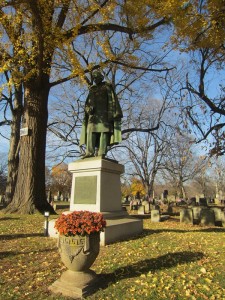
Statue honoring Dr. Trail Green, founder of the Easton Cemetery. Photo by Cory Kegerise, October 2014.
In 1849, a group of Easton’s most prominent civic leaders, led by Dr. Trail Green, incorporated the Easton Cemetery. Dr. Green had traveled extensively throughout the Commonwealth the year prior, touring burial grounds and documenting burial practices in numerous Pennsylvania communities. His observations inspired him to return to Easton and establish a rural, picturesque cemetery where the City could inter its dead in a beautiful and hygienic manner. The board engaged James Charles Sidney, an English-born surveyor and architect living in Philadelphia, to assist with site selection and planning. Sidney had published a series of maps of Philadelphia in the 1840s and in 1850 published a book on the design of cottages and landscapes. Following his work in Easton, Sidney went on to develop a master plan for Fairmount Park in Philadelphia and was a charter member of the Pennsylvania Institute of Architects.
The cemetery was an instant success, with many of the City’s most prominent families purchasing plots and erecting mausoleums and monuments. Some even moved and reinterred -family graves from older, more congested burial grounds. It was also a popular destination for picnics and promenades for all walks of life, just as Green and Sidney had envisioned. By 1870, the original 34 acres were nearly sold out and the cemetery board added a 14 acre parcel to the west. The cemetery is peppered with stone and metal sculpture, statuary, and funerary art executed by some of the finest craftsmen from Philadelphia, New York, New Jersey, as well as some Lehigh Valley-based artists. In addition to the crypts and mausoleums constructed by individual families, there are a number of board-sponsored structures that give the cemetery its dignified and romantic feeling. The English-inspired Gothic Revival chapel was completed in 1875, the monumental 7th Street Gate erected in 1882, and the handsome brownstone Gate House was completed in 1900.
- Monument at Easton Cemetery. Photo by Jeremy Young.
- The Mausoleum at the Easton Cemetery. Photo by Jeremy Young.
- Damage to the Easton Cemetery from Hurricane Sandy. Photo by Jeremy Young.
- The Gate House at Easton Cemetery. Photo by Cory Kegerise.
- The Chapel at Easton Cemetery. Photo by Cory Kegerise.
- Decorative ironwork and monuments at Easton Cemetery. Photo by Cory Kegerise.
The Easton Cemetery is still very much an active burial ground, and the managers are keenly aware of its history and significance. The chapel is being adapted to accommodate cremains, an increasingly popular choice in the 21st century. Hurricane Sandy damaged the roof of the Gate House, some monuments, and numerous trees throughout the property and the Cemetery board has applied for funding from PHMC to offset some of the costs of the repairs.
If you find yourself in Easton, perhaps visiting the Crayola Experience, Lafayette College, the National Canal Museum, the Delaware and Lehigh National Heritage Corridor, or any of the city’s numerous historical and cultural treasures, take a slight detour to the Easton Cemetery for a stroll among the dearly departed in this serene, historic setting.
Comment Policy
PHMC welcomes and encourages topic-related comments on this blog. PHMC reserves the right to remove comments that in PHMC’s discretion do not follow participation guidelines.
Commenters and Comments shall be related to the blog post topic and respectful of others who use this site.
Commenters and Comments shall not: use language that is offensive, inflammatory or provocative (this includes, but is not limited to, using profanity, obscene, or vulgar comments); disparage other commenters or people; condone illegal activity; identify the location of known or suspected archeological sites; post personal information in comments such as addresses, phone numbers, e-mail addresses or other contact details, which may relate to you or other individuals; impersonate or falsely claim to represent a person or an organization; make any commercial endorsement or promotion of any product, service or publication.
If you would like to comment on other topics not related to this blog post but related to PHMC, please fill out the PHMC Contact Us Form.
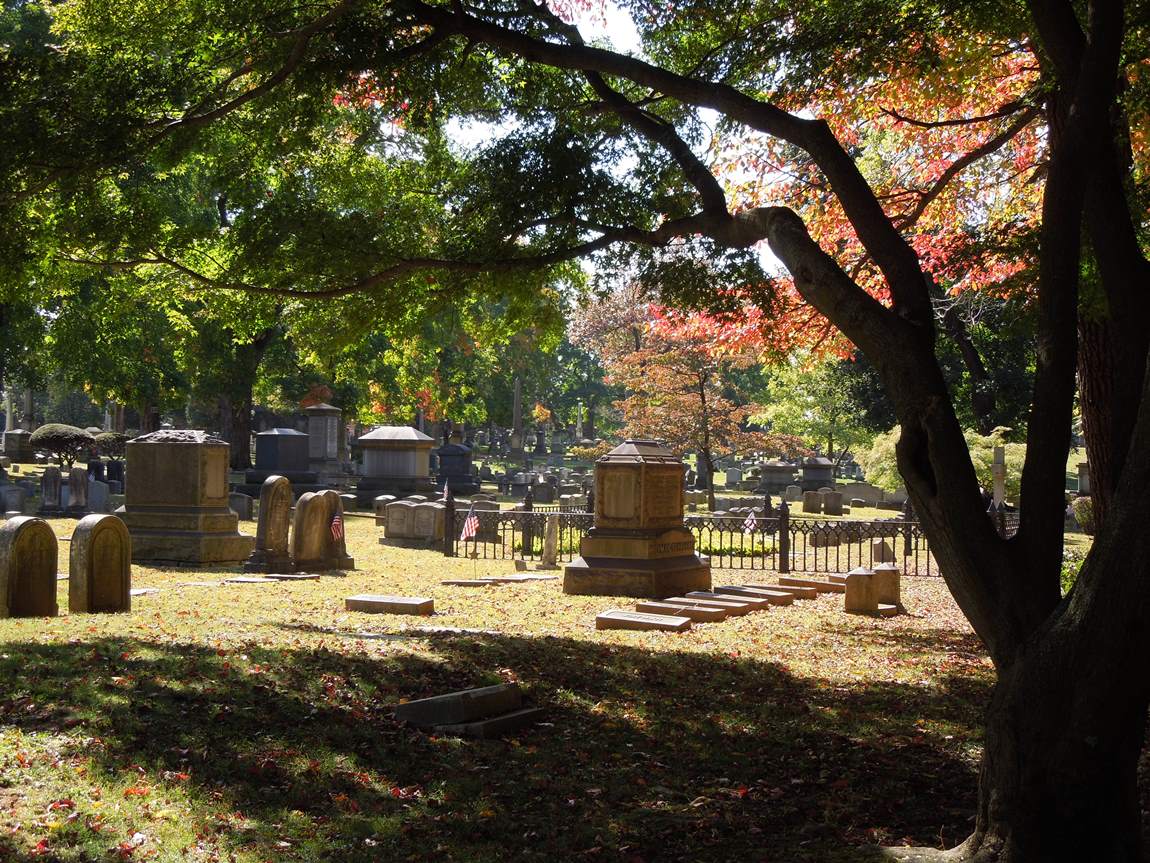
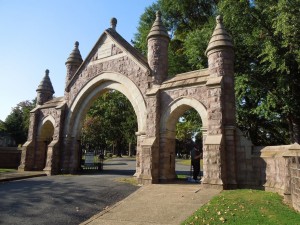
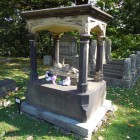
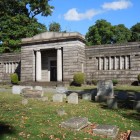
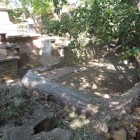
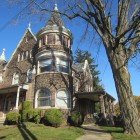
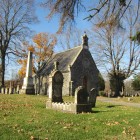
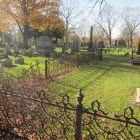
Thank you Cory for the spot light landing on our Cemetery. We are very proud of what we do here and its good to see it’s appreciated.
Jeff
Easton Cemetery Superintendent
There is a wonderful self-guided walking tour of the Easton Cemetery. A small booklet found on the porch of the gate house will take you to the interesting history Easton Cemetery offers.